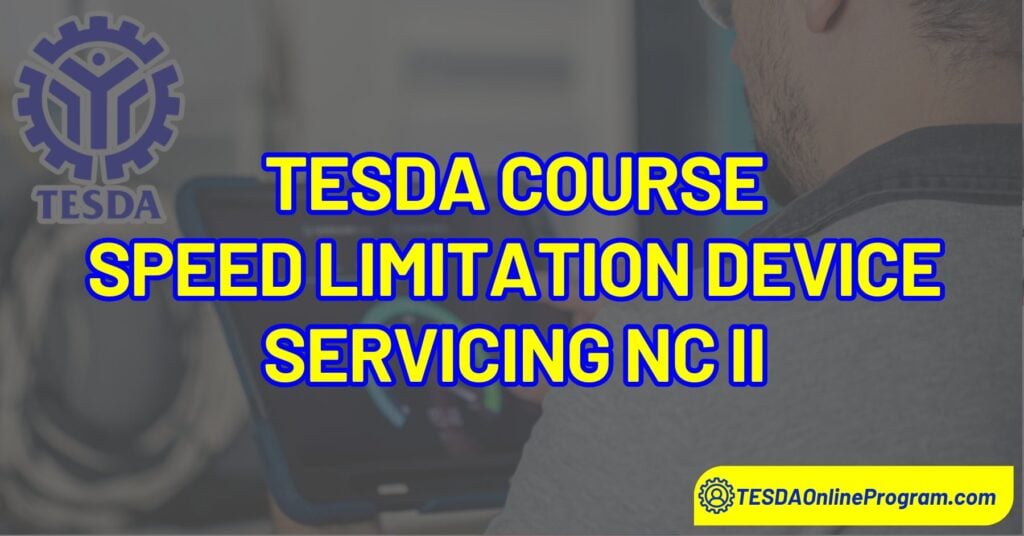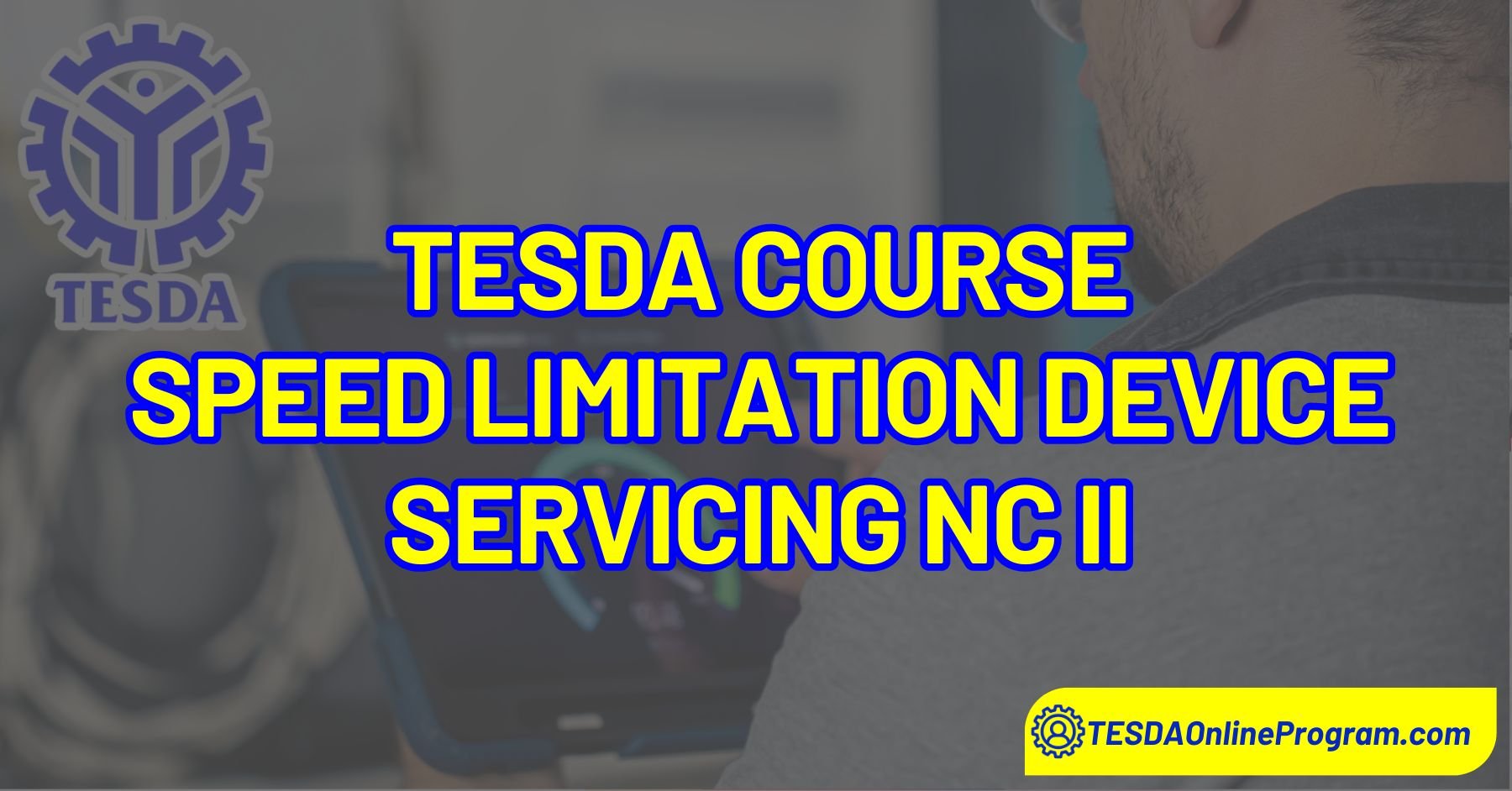The Speed Limitation Device Level II course offered by TESDA is a specialized training program designed to equip learners with the essential skills and knowledge to ensure road safety through proper speed regulation. This course focuses on the installation, repair, maintenance, and basic inspection of Speed Limitation Devices (SLDs) used in various types of vehicles. Participants will gain hands-on experience in working with both electrical and mechanical components of SLDs, ensuring that these systems function effectively in real-world conditions.
Also read: TESDA Automotive Servicing Courses
This competency-based course is applicable to a wide range of vehicles, including closed vans, cargo trucks, shuttle services, PUVs, and even second-hand units. It aims to support the implementation of speed control measures, especially for commercial and public transport vehicles, aligning with government efforts to reduce road accidents and promote responsible driving.

Course Description
The course provides learners with the skills to inspect, install, repair, and maintain speed limitation devices on various types of vehicles. It covers both brand-new and second-hand units, including closed vans, cargo trucks, shuttle services, public utility vehicles (PUVs), and tanker trucks. The course ensures participants can handle both mechanical and electrical components of the device, contributing to safer and more regulated road transport.
Benefits
Here are several benefits of taking the Speed Limitation Device Level II course by TESDA:
- Enhanced Employment Opportunities – Gain in-demand skills in automotive safety systems, making you qualified for roles in transport, logistics, and automotive repair industries.
- Road Safety Contribution – Help reduce road accidents by ensuring vehicles comply with legal speed limits through properly installed and maintained speed limitation devices.
- Technical Skills Development – Learn how to handle electrical and mechanical components, improving your overall automotive repair and maintenance expertise.
- Certification and Credibility – Receive a TESDA National Certificate (NC), a recognized credential that boosts your professional credibility both locally and abroad.
- Versatility in Vehicle Types – Be equipped to work with various vehicles, including PUVs, shuttle services, cargo trucks, and tankers—expanding your potential client base or employment scope.
- Support Government Initiatives – Align your work with national efforts to improve public transport safety and enforce traffic regulations.
Units of Competency
This Qualification has multiple Competency units, listed below:
BASIC COMPETENCIES
- Participate in workplace communication
- Work in a team environment
- Solve/address general workplace problems
- Develop career and life decisions
- Contribute to workplace innovation
- Present relevant information
- Practice occupational safety and health policies and procedures
- Exercise efficient and effective sustainable practices in the workplace
- Practice entrepreneurial skills in the workplace
COMMON COMPETENCIES
- Validate vehicle specification
- Utilize automotive tools
- Perform mensuration and calculation
- Utilize workshop facilities and equipment
- Prepare servicing parts and consumables
- Prepare vehicle for servicing and releasing
CORE COMPETENCIES
- Conduct basic inspection of engine and other electrical components
- Install Speed Limitation Device
- Maintain Speed Limitation Device
Sample of Certificate of Completion

Job Opportunities
A person who has obtained this Qualification possesses the necessary competence to serve as:
- Speed Limitation Device Installer
- Speed Limitation Device Installation Technician
Training Duration
- Basic: 37 hours
- Common: 122 hours
- Core: 25 hours
- SIL: 93 hours
Total: 277 hours
Qualifications
To join this program, trainees or students must meet these qualifications:
- Possesses a Certificate of Competency (COC) in Service Engine Component and Service Electrical Components OR holds qualifications in Automotive Servicing (Engine Repair) NC II and Automotive Servicing (Electrical Repair) NC II.
- Demonstrates proficient communication skills.
- Applies basic mathematical computation.
- Exhibits proficiency in basic computer operation.
- Holds a Certificate of Completion for completing 10 years of basic education or an equivalent qualification through the Alternative Learning System (ALS) with a grade 10 equivalent.
This list does not include specific institutional requirements, such as education, work experience, and others that may be necessary for trainees in the TVET program.
Also read: TESDA Automotive Electrical Assembly Courses
Requirements
To enroll in this course, you will need the following documents:
- PSA Birth Certificate
- High School or College Diploma
- Certified True Copy of Official Transcript of Records or Form 137
- Certificate of Good Moral Character or GMRC
- 1 x 1 and/or 2 x 2 pictures
To obtain further details, please reach out to the enrollment site that aligns with your requirements. Kindly note that the criteria may vary.
Instructor Credentials
The trainer qualifications for this Speed Limitation Device Servicing NC II require the following:
- Possess a National TVET Trainers Certificate (NTTC) Level 1 in Speed Limitation Device Servicing NC II or Automotive Servicing NC III
- Minimum 6 months of industry experience in Speed Limitation Device Installation within the past 3 years.
These requirements ensure that the instructor is fully prepared to teach and guide students in properly servicing speed limitation devices.
Also read: TESDA Electrical and Electronics Online Courses
Summary
The Speed Limitation Device Level II course by TESDA is a comprehensive training program that equips learners with the skills to inspect, install, repair, and maintain speed limitation devices in various vehicle types, including PUVs, cargo trucks, and shuttle services. Covering both mechanical and electrical components, the course promotes road safety and supports national regulations on speed control. It consists of basic, common, and core competencies totaling 277 training hours, and prepares graduates for roles such as Speed Limitation Device Installer or Technician. Applicants must meet educational and technical qualifications, while instructors are required to hold relevant certifications and industry experience.

